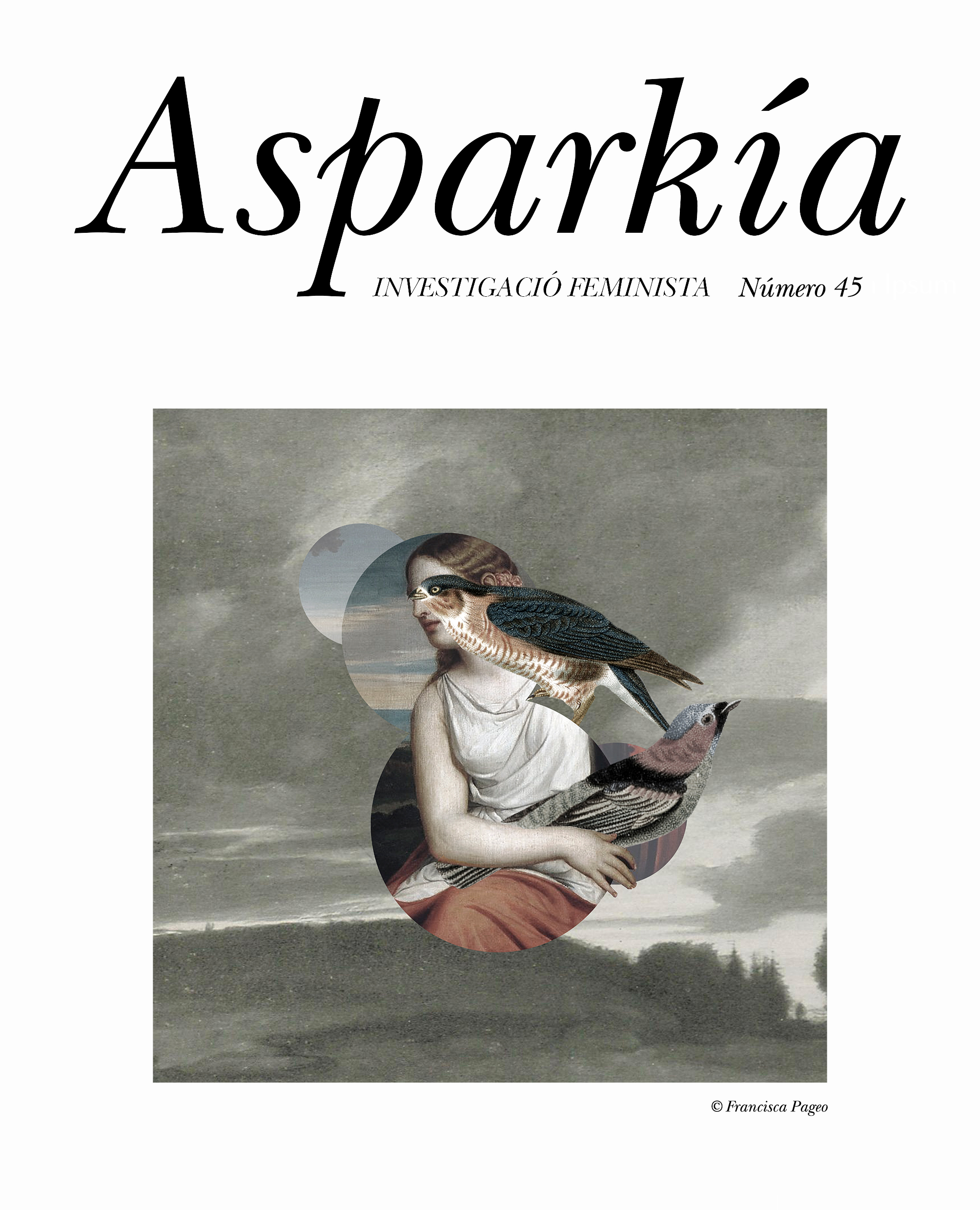The L Word In Spanish Cinema´. Autofiction Regarding "Girlfriends and Girlfriends" (Zaida Carmona, 2022)
Main Article Content
Abstract
Contemporary Spanish lesbian cinema, an indivisible branch of the Other New Spanish Cinema by Women (ONCEF), is beginning to give voice to lesbian authors and it presents us with stories narrated in first person in which identity is at the core of the narrative. This research aims to discover the language of contemporary lesbian cinema through the filmic analysis of Girlfriends and Girlfriends (Zaida Carmona, 2022), a film that unveils the dynamics of a group of lesbian friends in Barcelona. Set in a videoclip aesthetic, the movie is heir to the tradition of internet webseries and New Queer Cinema; as well as its mise-en-scène and montage pay homage to Rohmer’s nouvelle vague and its script narrates from an autofiction perspective.
Downloads
Article Details
References
Alfeo, Juan Carlos, & Escolar, Luís. D. (2022). «LGBTQIA+ cartographies in filmic Madrid: narrative traits of spatial characterization». En Boletín de la Asociación de Geógrafos Españoles, (95), 2-35. https://doi.org/10.21138/bage.3329
Aumont, Jacques. y Marie, Michel. (2002). Análisis del film. Paidós.
Beltrán, Iván. G. (2017). «El sujeto lésbico en el cine español dirigido por mujeres: el caso de Marta Balletbó-Coll: Costa Brava (1995) y Sévigné (2004)». En Asparkía: investigació feminista, (31), 29-46.
Boletín Oficial del Estado [BOE], Número 157 de 2005, Ley 13/2005, 2 de julio de 2005. Artículo(s): 46, 48, 53. (España).
Boletín Oficial del Estado [BOE], Número 51 de 2023, Ley 4/2023, 1 de marzo de 2023. Artículo(s): 4-82. (España).
Parrondo Coppel ,Eva., & González-Hortigüela, Tecla. (2016). «Releyendo a Laura Mulvey 40 años después. Historiografía y feminismo / Re-reading Laura Mulvey 40 Years After. Historiography and Feminism». En Secuencias, 42. https://doi.org/10.15366/secuencias2016.42.003..
De Lauretis, Teresa. (1992). Alicia ya no: feminismo, semiótica, cine. Cátedra.
Doty, Alexander. (2002). Flaming classics. Queering the film canon. Routledge.
Fontán Domínguez, Alejandro. (2018). Análisis de figuras LGTBI+ en webseries españolas de 2005 a 2014 y su correlación con la aceptación de dicho colectivo en la sociedad española. (Treball Final de Grau), Universitat Autònoma de Barcelona.
García-Catalán, Shaila., Rodríguez Serrano, Aarón., Martín Núñez, Marta., Inicial. (2022). «De un radical realismo íntimo: un Otro Nuevo Cine Español firmado por mujeres». En L'Atalante. Revista de estudios cinematográficos, 33, 7-24.
Gaudreault, Andre., & Jost, Francois. (1995). El relato cinematográfico. Buenos Aires: Paidós.
González, Clarissa. (2011). «Visibilidad y diversidad lésbica en el cine español. Cuatro películas de la última década». En ICONO 14, Revista de comunicación y tecnologías emergentes, 9(3), 221-255.
González Fernández, Sara. (2018). «Desmontando estereotipos: La representación de la mujer lesbiana en la ficción digital. Análisis de la webserie Muñecas». En Dígitos Revista de Comunicación Digital, nº4, pp.117-130.
Heller, Eva. (2010). Psicología del color: Cómo actúan los colores sobre los sentimientos y la razón. Editorial GG.
Irigaray, Luce. (2009). Ese sexo que no es uno (Vol. 57). Ediciones Akal.
Ituarte Pérez, Leire. (2012) «El ‘romance familiar’ sale del armario: la fantasía femenina en Sévigné (Julia Berkowitz)». En Feminismo/s, (19), pp. 13-27.
Levine, Amir. & Heller, Rachel (2011). Maneras de amar. La nueva ciencia del apego adulto y cómo puede ayudarte a encontrar el amor… y conservarlo. Barcelona: Urano..
Marks, Laura. U. (1998). «Video haptics and erotics». En Screen, 39(4), 331-348.
Montenegro, Marisela., Pujol, Joan., &, García Nagore. (2011). «Re/Construccions dels Cossos Lesbians: aspirem a un «Circuit» post-pornogràfic?. Reconstruction of Lesbian Bodies: We Aspire to a Postporn Circuit”)». In Accions i reinvencions: Cultures lesbiques a la Catalunya del tombant del segle XX-XXI (Actions and Reinventions: Lesbic Cultures in Catalonia in the Twentieth and Twenty-first Centuries), edited by Meri Torras. Barcelona: UOC-UAB.
Mulvey, Laura. (1975). «Visual pleasure in narrative cinema» in Film: Psychology, society and ideology, Screen Vol. 16 (University of Glasgow), 746-759.
Noble, Fiona. (2014). «‘La familia ya no es lo que era’: intercultural lesbian relationships in contemporary Spanish cinema». En Feminismo-s, 23, 253-277.
Ribes Pericàs, Francina. (2022). Ausencia y exceso: Lesbianas y bisexuales asesinas en el cine de Hollywood. Dos Bigotes.
Rich, Adrienne. (2002). «Compulsory heterosexuality and lesbian existence». In Culture, Society and Sexuality (pp. 199-225). Routledge.
Rich, Adrienne. C. (2003). «Compulsory heterosexuality and lesbian existence» (1980). Journal of women's history, 15(3), 11-48.
Zunzunegui Díez, Santos. (1989). Pensar la imagen (Vol. 15). Ediciones Cátedra.
Zunzunegui Díez, Santos. (1996). «El texto de la imagen. En Textos de didáctica de la lengua y la literatura, Imagen, lengua y comunicación, nº7, pp 19-30.


